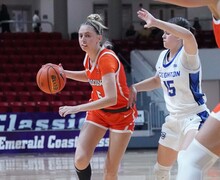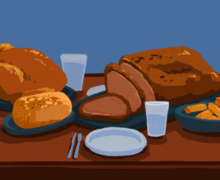Refugee program strives to help entrepreneurship in agriculture
Sarah Allam | Illustration Editor
The fall harvest season begins soon for farmers across central New York. But for some members of the Syracuse Refugee Agricultural Partnership Program, this season will present a learning curve as they begin their first harvest.
SyRAPP, which started in October 2016 with 20 participants, provides refugees and immigrants in Syracuse an agricultural education program, which includes the opportunity to produce and sell their own crops. As the program enters its third year this fall, SyRAPP organizers will help members continue to use their skills beyond the program.
SyRAPP is organized by Refugee and Immigrant Self-Empowerment, a Syracuse-based nonprofit organization that aims to help the city’s refugee and immigrant communities acclimate and thrive. During the course of the three-year program, participants learn farming techniques, grow and distribute their own produce and receive assistance in continuing to farm on their own, if they choose to.
Jessi Lyons, a farm coordinator at Brady Faith Center and a partner of SyRAPP, said the program is geared toward all learning levels — not everyone involved is necessarily looking for a career in agriculture.
“The program was designed to serve people in multiple ways,” Lyons said. “If (they) want to become farmers and … somehow participate in the agricultural system, they have the skills and the ability to do that.”
During the first year, participants take part in hands-on classes provided through the Cornell Cooperative Extension of Onondaga County. Beginner, intermediate and advanced level classes are available and cover a broad range of agricultural knowledge, including tending to soil, natural pest control, application of natural fertilizers, planting and irrigation. The classes also serve as English courses.

Talia Trackim | Digital Design Editor
SyRAPP participants come from countries such as Bhutan, Somalia and the Democratic Republic of the Congo, all with varying climates and growing seasons. Kayo Green, the urban agriculture educator at CCE, emphasizes teaching and highlighting the differences in geography and methods.
“That’s really an important approach for us,” Green said. “To know where people are coming from, what practices they’re using, and how different their techniques should be.”
In the second year, participants are given an eighth of an acre plot at Salt City Harvest Farm to independently grow crops of their choice. They are then able to distribute their produce through the Brady Faith Center at both the Syracuse Downtown Farmers Market and the CNY Regional Market.
The third and final year focuses more on the business aspects of farming. Participants can keep their given plot, or they can move up to a quarter acre plot. SyRAPP offers a one-on-one business mentorship, and can assist in writing a business plan.
Of the original participants, 10 are currently growing and harvesting their own crops at Salt City Harvest Farms. They’re also taking intermediate level classes with CCE, while six new participants are entering their first year of beginner level classes.
Looking ahead, SyRAPP organizers are reflecting on where they’d like the program to go. Green, for example, sees untapped potential in upper level program participants, and said she would like to see them teach beginner level courses.
The effects, Green said, would be twofold. Not only would it be easier and more comfortable for the new participants to be learning from people within their own communities, it would also help to make the program more self-sustaining moving forward.
Brandy Colebrook, the program coordinator for SyRAPP, said she also sees the value of allowing participants to cater directly to people in their communities. This past year, SyRAPP started a new community garden and farmers market on Lodi Street in North Syracuse where many of the participants’ communities are located, allowing them to work closer to home and serve their communities directly as the program continues.
Ahmed Abdirahman has been participating in SyRAPP from the beginning. He’s now harvesting his own organic tomatoes, okra, corn and other crops and bringing them home to his family. He has seen the benefits and is looking forward to SyRAPP’s future.
“This program has helped me a lot,” Abdirahman says. “(It’s) going to keep going.”
Published on September 17, 2018 at 9:34 pm







